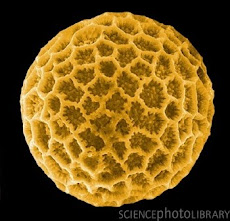http://specifysoftware.org/
The Specify Software Project offers Specify 6 and allied applications for museum and herbarium research data processing. Specify 6 handles specimen information for computerizing collection holdings, for tracking specimen and tissue management transactions, and for mobilizing species occurrence data to the Internet. Specify runs on Windows, Mac OS X, and Linux computers; it is free and open source licensed. Specify 6.0 was released on 10 April 2009.
Specify 6 has an intuitive user interface and customizable data forms aimed at streamlining routine collections data tasks while preparing and validating collection information for research analysis. Specify has numerous features including robust support for paleontological data, field notebooks, file attachments, GUIDs, hierarchical storage locations, data uploads through the Specify Workbench and Excel, repository agreements, accession logging, conservation treatments, collection object containers, along with numerous additional functions. Specify 6 supports the use of record sets for various types of processing, such as georeferencing with GEOLocate, label and report printing, and importing and exporting, and Specify's data model now handles all institutional collections within a single database for simplified administration.
Specify 6's approach to Stratigraphy
The Specify 6 Paleontological Data Model
Specify Software Project Staff
31 March 2009
Version 2.0
31 March 2009
Version 2.0
Summary
As part of design of Specify 6, we sought to improve Specify's handling of paleontological data. The information model for Specify 5.x for Paleo collections was incomplete and we had received useful feedback about additional requirements paleo collections researchers wanted accommodated. Of central importance is modeling of stratigraphic information, in particular biostratigraphy, chronostratigraphy, and lithostratigraphy. Paleo collections data researchers conceptualize stratigraphy as another index upon which to query and classify holdings. As Paleo researchers are aware, this dimension is complex and dynamic. Stratigraphies, like taxonomic classifications, are comprised of tree-structured data, and like biological taxonomies, stratigraphic classifications vary through time. Various authorities update reference standards on regular or irregular schedules. Stratigraphic usage also varies through space, with different classifications preferred by different countries.
The discussion below traces the intellectual path we took to derive a new data model for handling paleontological localities and associated stratigraphic data. In our exploration, greatly assisted by colleagues, we noted that Paleo Localities are not the same kind of concept as Collection Localities for neontological collections; in terms of data they are not merely points or polygons with x,y coordinate descriptors describing a space where something was found. Localities in paleontology are defined in both spatial and temporal dimensions, with additional elements of ordinal position and rank (stratigraphies).
In short, in the Specify 6 we model Paleo Context (and stratigraphic information) as direct relations of Collection Objects (Figure 8). In Specify 5, we considered paleo locality data to be indirectly related to Collection Objects, through a link to Collecting Event or Collection Locality. But that approach does not allow unambiguous assignment of the paleo location attributes to individual Collection Objects, given our existing formalizations for neontological Collecting Events and Collection Localities.










Nenhum comentário:
Postar um comentário